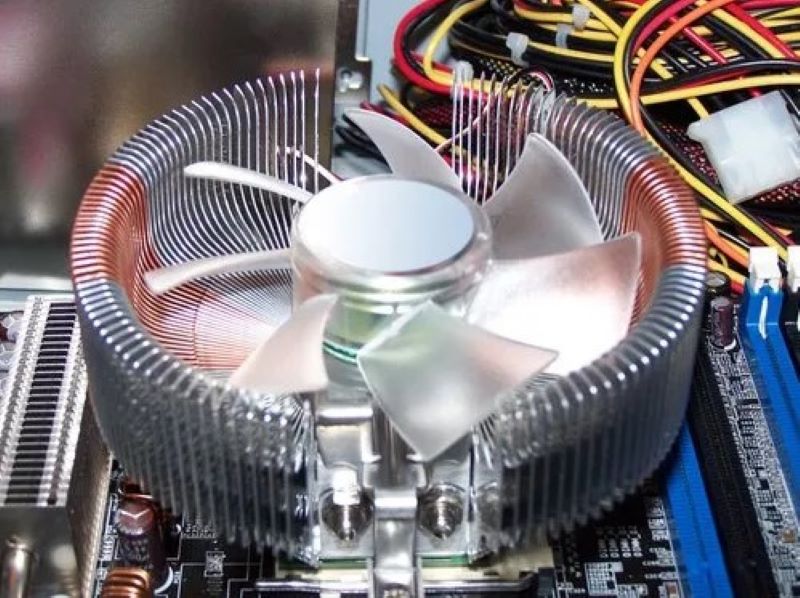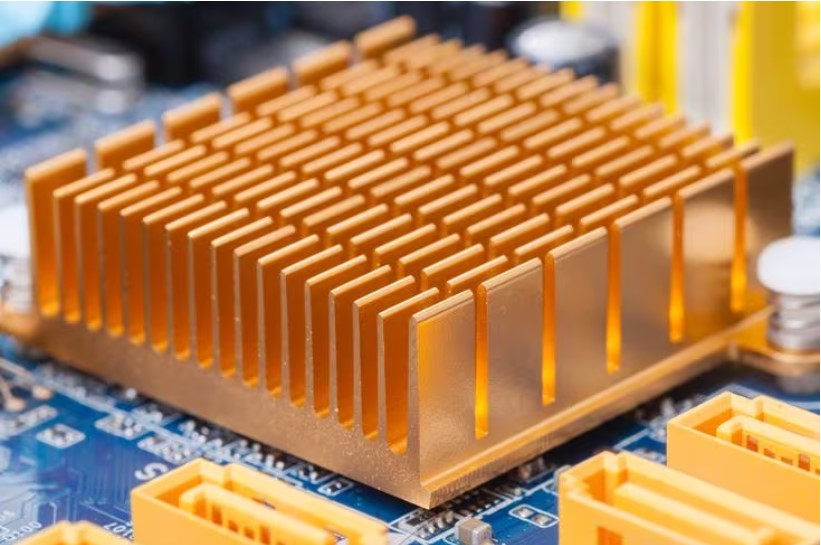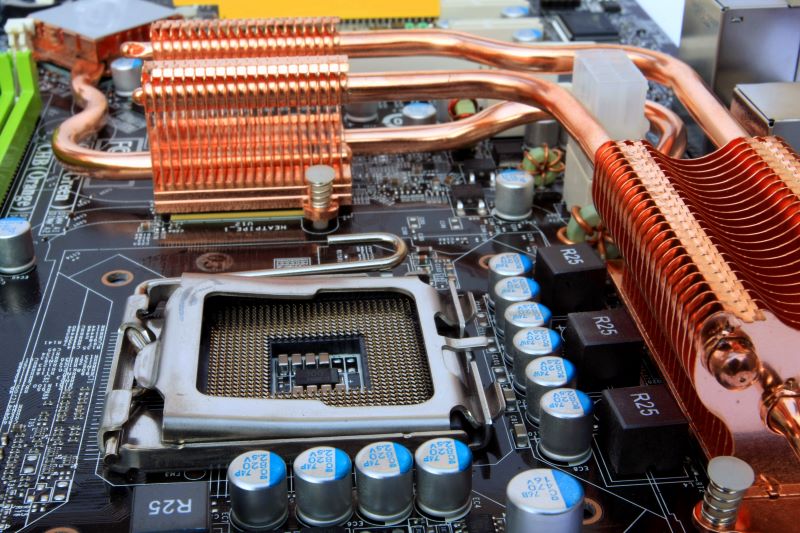Cooling of Electronic Devices: A Key Aspect for Longevity and Reliability
Why Cooling is Important
With the increasing performance of electronics, the amount of heat generated by these devices is also rising. Heat is the enemy of electronics because it accelerates component wear and can lead to irreversible damage. Although today's computers are smaller and more powerful, their thermal loads are more demanding than ever. When we compare today's devices with those from the past, we find that electronics of the 20th century operated under much more favorable conditions. This doesn't necessarily mean that the room temperature around computers today is warmer than in the past. Instead, it highlights that modern electronics are more powerful, perform more demanding tasks, and require better cooling to maintain a stable temperature and prevent overheating.
Electronic systems are now the heart of our modern society. From mobile devices to complex industrial systems, they are crucial for our everyday functioning. To ensure their smooth operation and maximum performance, it is a priority to provide proper cooling and protection against overheating.
Methods of Electronic Cooling
There are several different methods of active electronic cooling, each with its advantages and disadvantages. Here, we will introduce some of the main methods.
Fans
Fans are the fundamental components of active cooling. We encounter them in many electronic devices, from desktop computers to industrial systems. Fans help dissipate heat and maintain a safe temperature range. When a device starts generating more heat, such as during demanding computations, the fan speeds up to expel heat from the device. Modern fans are designed to be as quiet as possible to avoid disrupting the device's operation. However, it's essential to ensure that fans are not clogged with dust, which could limit their cooling capabilities.
Peltier Modules
Peltier modules are an interesting solution for electronic cooling. These modules consist of ceramic plates with embedded semiconductors that react to electric current and generate temperature changes. Peltier modules are compact and have no moving parts, making them reliable for cooling. They can be used in demanding environments, such as high-dust conditions. Many portable coolers and high-powered generators use this technology for precise temperature regulation.
Liquid Cooling
Liquid cooling is ideal for electronic systems that require high cooling performance. Liquids have a much higher thermal capacity than air, allowing them to efficiently dissipate heat. Liquid cooling systems use water blocks and a pump system to remove heat. It is essential to ensure that the liquid does not come into contact with electronic components, so non-conductive coolants are primarily used.
Heat Pipes
Heat pipes are simple devices designed to transfer heat through convection. Heat pipes are divided into three zones: the evaporation, transition, and condensation zones. Thermal energy is absorbed in the evaporation zone, where the working fluid evaporates. The pressure difference between the evaporation and condensation zones drives the movement of the fluid, enabling heat dissipation. Heat pipes are used in spacecraft, industry, and other applications.

Selection of Electronic Cooling Method
When selecting a cooling method for electronics, several factors need to be considered. Technical specifications of the device and its dimensions play a crucial role. It's also essential to consider the space for air circulation and ensure that the device is used for its intended purpose.
In addition to the advanced cooling methods mentioned above, there is also a basic way to cool printed circuit boards and electronic components directly on them. This method of cooling is often used in everyday consumer electronics and is based on the principles of passive cooling.
Passive PCB Cooling
Passive electronic cooling begins at the level of printed circuit boards (PCBs) and involves dissipating heat from electronic components and the PCB without using active cooling elements like fans or pumps. Instead, it relies on principles of heat exchange and air convection.
Heat Spreading
One of the primary methods of passive PCB cooling is heat spreading, which involves thermal contact between electronic components and aluminum or copper pads on the PCB. These metal pads serve as heat sinks and transfer heat from electronic components to the surrounding air.
Thermal conductive materials, such as thermal paste or thermal tapes, can be used to improve heat transfer. Cooling with copper pads or strips attached to critical areas of the PCB is a crucial aspect of passive electronic cooling. Copper, with its excellent thermal conductivity, allows for rapid and efficient heat transfer from electronic components to the surrounding air.
Passive copper heat sinks are particularly useful for electronics that require stable temperature conditions and do not have their fans or moving parts. This approach efficiently dissipates heat without the need for an additional power source.
Heat Dissipation
Another component of passive cooling is creating optimal airflow around the PCB. This can be achieved by appropriate PCB placement and design. Ventilation holes and channels can be designed to allow free airflow and remove hot air from the vicinity of the components.
Passive Fins
Passive cooling can also be enhanced by using finned structures on aluminum heat sinks. These fins increase the surface area of the heat sink, thereby improving its heat dissipation capability. Passive fins are often used on aluminum covers of processors and other high-performance components.

Passive vs. Active Cooling
Passive cooling offers several advantages, including quiet operation, reliability, and the absence of moving parts that could fail. This makes it ideal for consumer electronics, where minimizing noise is desirable. On the other hand, active cooling using fans provides higher cooling capacity and may be more suitable for high-performance electronics or applications with high thermal loads.
Passively Active Cooling
A compromise between the two approaches is passively active cooling through the use of heat sinks. Heat sinks are another essential part of cooling systems that often work in conjunction with fans. Heat sinks are typically made of aluminum and have a finned structure, increasing their surface area. The larger the heat sink, the more efficiently it dissipates heat. Besides size, the distance between the heat sink and the heated components is essential, affecting the effectiveness of heat dissipation. An associated fan enhances heat dissipation and increases cooling efficiency.

Difference between Active and Passive Electronics Cooling
It lies in how heat is dissipated and the temperature of electronic components is regulated. Here is a brief explanation of both methods:
Active electronics cooling:
Principle: Active cooling uses an external energy source, typically a fan or compressor, to actively dissipate heat from electronics.
Fans: Fans are commonly used to expel hot air from the electronics and draw in cooler air from the surroundings.
Advantages: Active cooling can maintain a constant temperature of electronics even under high thermal loads. It is effective in situations where rapid and efficient cooling is required.
Disadvantages: It consumes electrical energy and can be noisy. Fans may require maintenance and can accumulate dust.
Passive electronics cooling:
Principle: Passive cooling relies solely on the inherent thermal conductivity and air convection for heat dissipation, without the use of an active external energy source.
Heat sinks: Metal heat sinks are used, which are placed on electronic components to dissipate heat into the surrounding air.
Advantages: Passive cooling is energy-efficient, does not have moving parts, and is quiet. It is ideal for devices that do not have access to electrical power or where noise is undesirable.
Disadvantages: It may be less effective in dissipating heat under high thermal loads. Its efficiency depends on air convection and the thermal conductivity of materials.
Both methods have their applications depending on the specific needs and the environment of the electronics. Active cooling is often used in computers and servers where high performance and constant temperature are key factors. Passive cooling is suitable for devices not exposed to high thermal loads and where minimizing energy consumption and noise are necessary.
Choosing the Right Electronic Cooling Method
When choosing an electronic cooling method, several factors need to be considered. The technical specifications of the device and its dimensions play a critical role. It is also essential to consider the space for air circulation and ensure that the device is used for its intended purpose.
Cooling electronic devices is a critical element in ensuring their long life and reliable operation. The right choice of the cooling system, whether it involves fans, heat sinks, Peltier modules, liquid cooling, or heat pipes, each of these cooling methods has its advantages and disadvantages and may be suitable for various applications. Regardless of the cooling method, it is crucial to ensure that the electronics are efficiently cooled and their usage complies with IP ratings to operate seamlessly and achieve their maximum performance.
Connect with our specialists